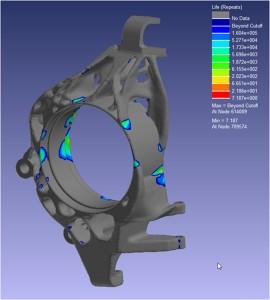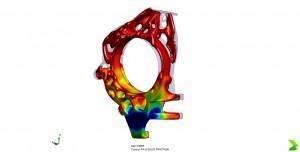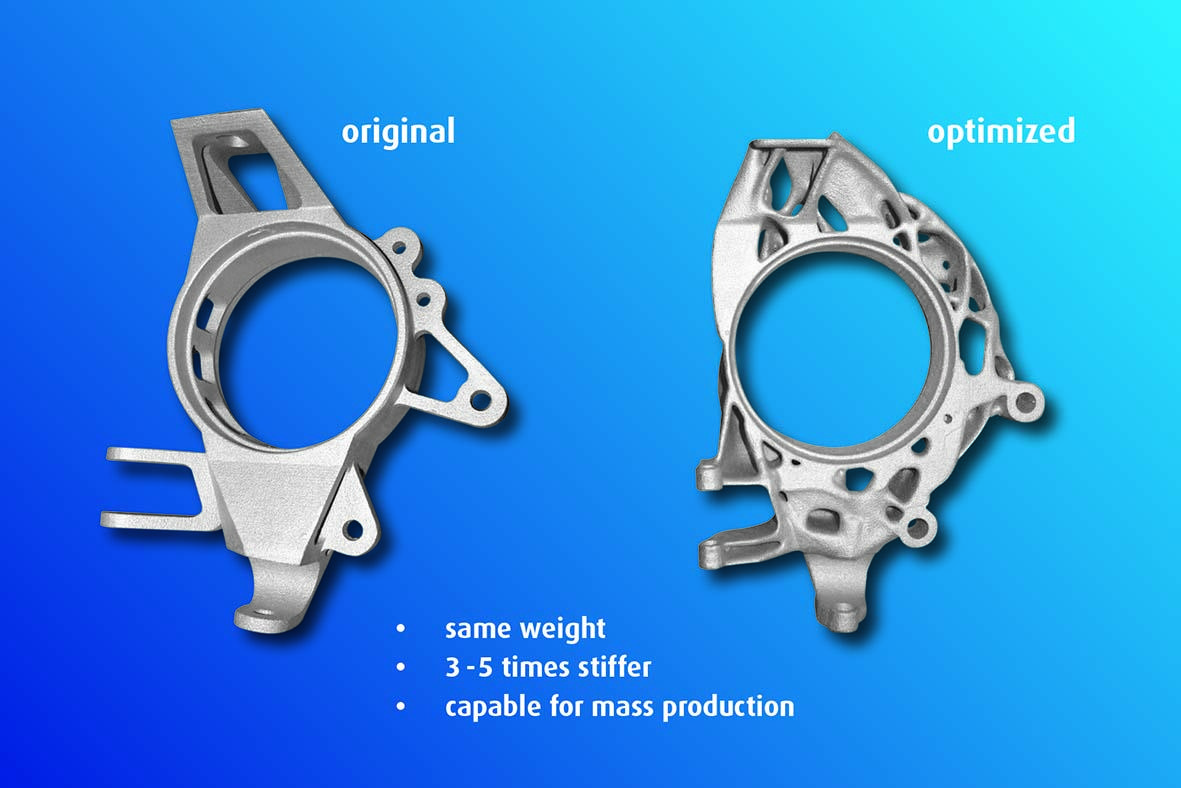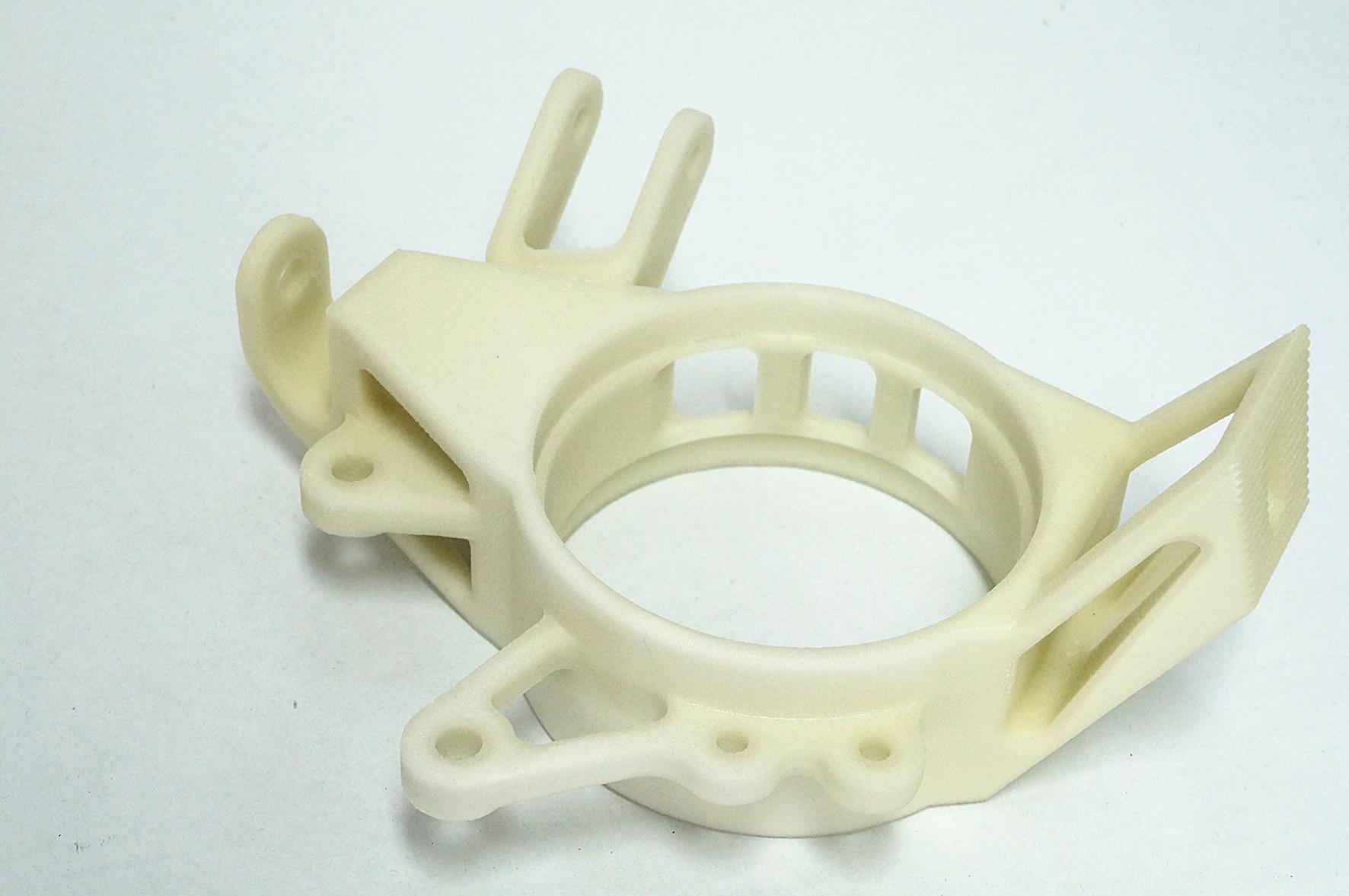 3D printing is revolutionizing manufacturing as we’ve come to know it — but a revolution doesn’t always mean a sea change with completely new techniques. Innovation is built on established history, and with casting techniques having been used for centuries in the production of tools, parts, and other manufactured goods, there’s no need to reinvent the wheel. But 3D printing certainly can improve upon that wheel.
3D printing is revolutionizing manufacturing as we’ve come to know it — but a revolution doesn’t always mean a sea change with completely new techniques. Innovation is built on established history, and with casting techniques having been used for centuries in the production of tools, parts, and other manufactured goods, there’s no need to reinvent the wheel. But 3D printing certainly can improve upon that wheel.
A new collaboration between voxeljet, Altair, Click2Cast, and HBM nCode has just announced a new mold making technique. The companies have brought together “design optimization, casting simulation, fatigue analysis, and 3D printing to create better-performing, lightweight vehicle component” that can offer superior characteristics due to quality checks throughout the design and build process. Their proof-of-concept lightweight vehicle component serves to illustrate the concept, which they say offers “solid potential for serial manufacturing and mass production.”
“We are very pleased to realize such an innovative initiative with our partners,” said Altair Engineering GmbH’s Marketing Director, Mirko Bromberger. “The technology demonstration clearly shows the potential this integrated process offers. By combining optimization, fatigue analysis, casting simulation and 3D printing, it is possible to leverage the full potential of lightweight design or, as in this case, significantly improve performance without compromising weight goals. With this wheel carrier component, Altair, our APA partners Click2Cast and nCode, and voxeljet have proven that a paradigm change in how products are developed is possible and already available today.”
 The project at hand was a wheel carrier created for a student race car. Altair’s OptiStruct optimization solver came into play for design, as the space was defined using OptiStruct-based Inspire. By running scenarios that would affect loads and applying severe situations to the model, a part was able to be designed that took the current aluminum cast part and redistributed the material — now, with the same amount of actual material, stiffness is increased by 3-5 times.
The project at hand was a wheel carrier created for a student race car. Altair’s OptiStruct optimization solver came into play for design, as the space was defined using OptiStruct-based Inspire. By running scenarios that would affect loads and applying severe situations to the model, a part was able to be designed that took the current aluminum cast part and redistributed the material — now, with the same amount of actual material, stiffness is increased by 3-5 times.
Following that design process, nCode DesignLife was utilized to load five road condition scenarios to check fatigue damage schedule. For its part, Click2Cast simulation was used both at the start and the end of the process, first testing the ability of the design to be manufactured, and finally to simulate the process of the full mold filling and the thermal solidification.
 Following the optimization, fatigue schedule analysis, and casting simulation, voxeljet came into play to 3D print the well thought-out molds. The cast design, created using PMMA via CAD data, produces a lightweight 3D printed plastic mold that can offer a final piece comparable to one created via traditional means but with “vastly less” expenditure
Following the optimization, fatigue schedule analysis, and casting simulation, voxeljet came into play to 3D print the well thought-out molds. The cast design, created using PMMA via CAD data, produces a lightweight 3D printed plastic mold that can offer a final piece comparable to one created via traditional means but with “vastly less” expenditure .
.
“When it comes to speed and capabilities for serial production you might want to look at this process,” said Kevin Smith, Director Global Applications, voxeljet. “It marks the ‘rebirth’ of one of the oldest manufacturing process available – casting! The new process includes moulds made with 3D printing, an entirely new approach to mould making. By using the voxeljet 3D printing process, mould making is dramatically faster and the design freedom this process offers is great. 3D printing the patterns and moulds, is potentially the only way we can achieve this level of cast complexity. To leverage the design freedom 3D printing offers to full capacity, the design for the printed piece comes from simulation tools, which provide structural inspiration and enable the assessment of manufacturability and durability. The result we have received is very promising: the component is now 3-5 times stiffer (depending on the load case) than the original design without having to add weight. Another great advantage of this approach is, that the manufacturing process is already well established, certified in various industries and is suitable for mass production.”
The 3D printed plastic molds and final aluminum casted component will be on display at HANNOVER MESSE 2015 in April, at voxeljet’s booth in Hall 7.
Let us know your thoughts on this new take on traditional casting manufacturing processes in the voxeljet 3D Printed Mold Process forum thread over at 3DPB.com.
Subscribe to Our Email Newsletter
Stay up-to-date on all the latest news from the 3D printing industry and receive information and offers from third party vendors.
You May Also Like
Profiling a Construction 3D Printing Pioneer: US Army Corps of Engineers’ Megan Kreiger
The world of construction 3D printing is still so new that the true experts can probably be counted on two hands. Among them is Megan Kreiger, Portfolio Manager of Additive...
US Army Corps of Engineers Taps Lincoln Electric & Eaton for Largest 3D Printed US Civil Works Part
The Soo Locks sit on the US-Canadian border, enabling maritime travel between Lake Superior and Lake Huron, from which ships can reach the rest of the Great Lakes. Crafts carrying...
Construction 3D Printing CEO Reflects on Being Female in Construction
Natalie Wadley, CEO of ChangeMaker3D, could hear the words of her daughter sitting next to her resounding in her head. “Mum, MUM, you’ve won!” Wadley had just won the prestigious...
1Print to Commercialize 3D Printed Coastal Resilience Solutions
1Print, a company that specializes in deploying additive construction (AC) for infrastructure projects, has entered an agreement with the University of Miami (UM) to accelerate commercialization of the SEAHIVE shoreline...






























